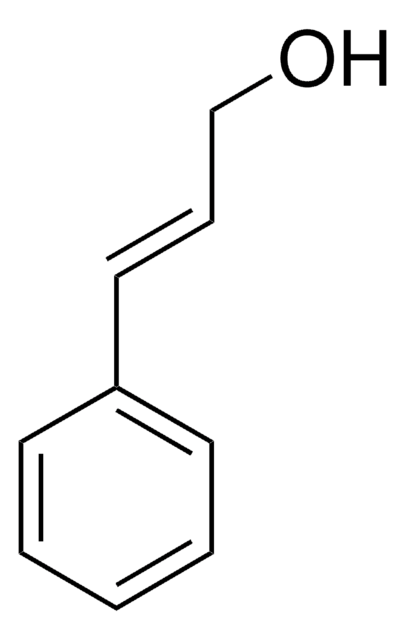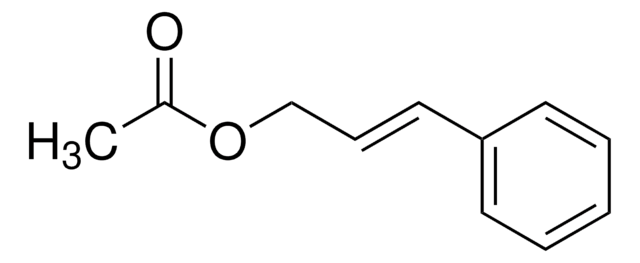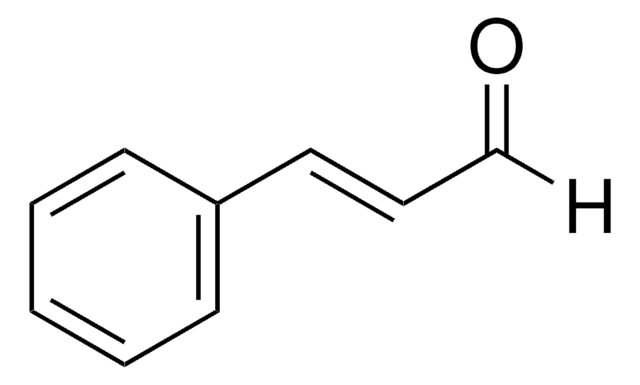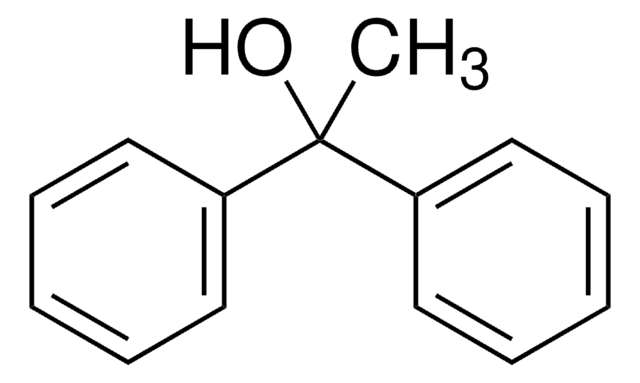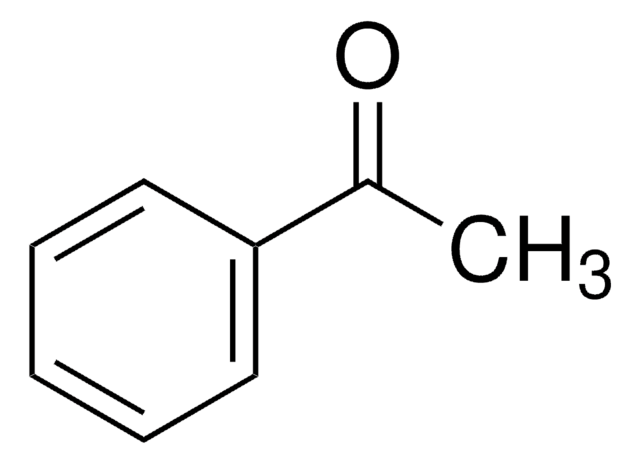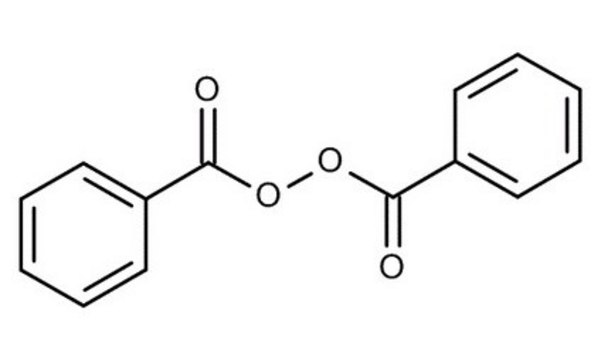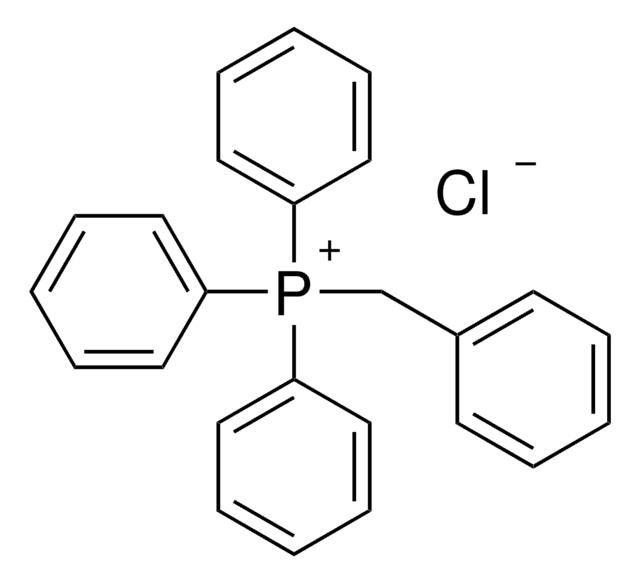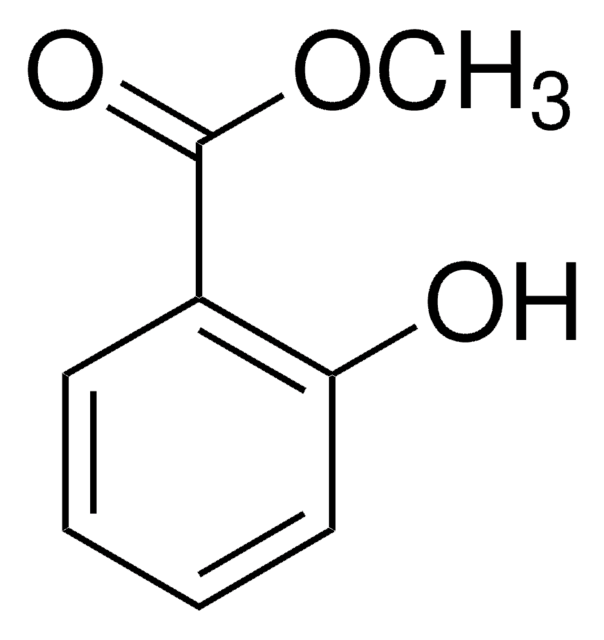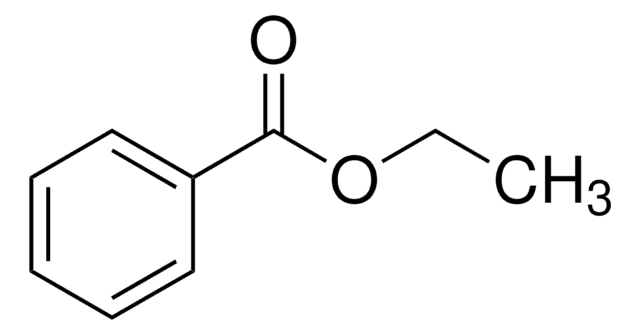All Photos(1)
About This Item
Linear Formula:
CH3CO2CH2CH=CHC6H5
CAS Number:
Molecular Weight:
176.21
EC Number:
MDL number:
UNSPSC Code:
12352100
PubChem Substance ID:
NACRES:
NA.22
Recommended Products
Quality Level
Assay
99%
form
powder
refractive index
n20/D 1.541 (lit.)
bp
265 °C (lit.)
solubility
alcohol: soluble(lit.)
glycerol: insoluble(lit.)
water: insoluble(lit.)
density
1.057 g/mL at 25 °C
SMILES string
CC(=O)OC\C=C\c1ccccc1
InChI
1S/C11H12O2/c1-10(12)13-9-5-8-11-6-3-2-4-7-11/h2-8H,9H2,1H3/b8-5+
InChI key
WJSDHUCWMSHDCR-VMPITWQZSA-N
Looking for similar products? Visit Product Comparison Guide
General description
Cinnamyl acetate is a fragrance ingredient. Palladium catalyzed allylic alkylation of cinnamyl acetate using sodium diethyl 2-methylmalonate and novel ferrocenyl Schiff base has been investigated.
Signal Word
Warning
Hazard Statements
Precautionary Statements
Hazard Classifications
Eye Irrit. 2
Storage Class Code
10 - Combustible liquids
WGK
WGK 1
Flash Point(F)
235.4 °F - closed cup
Flash Point(C)
113 °C - closed cup
Personal Protective Equipment
dust mask type N95 (US), Eyeshields, Gloves
Regulatory Information
新产品
Choose from one of the most recent versions:
Already Own This Product?
Find documentation for the products that you have recently purchased in the Document Library.
Schiff bases containing ferrocenyl and thienyl units and their utility in the palladium catalyzed allylic alkylation of cinnamyl acetate.
Pou D, et al
Journal of Organometallic Chemistry, 692(22), 5017-5025 (2007)
S P Bhatia et al.
Food and chemical toxicology : an international journal published for the British Industrial Biological Research Association, 45 Suppl 1, S53-S57 (2007-11-23)
A toxicologic and dermatologic review of cinnamyl acetate when used as a fragrance ingredient is presented.
Ji-Eun Lee et al.
Pesticide biochemistry and physiology, 168, 104644-104644 (2020-07-28)
To find new and safe type of control agents against phytopathogenic fungi, the fumigant antifungal activity of 10 plant essential oils and constituents identified in cinnamon bark (Cinnamomum verum) and lemongrass (Cymbopogon citratus) essential oils was investigated against two phytopathogenic
Emilie Deletre et al.
Parasites & vectors, 8, 316-316 (2015-06-13)
Laboratory and field studies showed that repellent, irritant and toxic actions of common public health insecticides reduce human-vector contact and thereby interrupt disease transmission. One of the more effective strategies to reduce disease risk involves the use of long-lasting treated
Our team of scientists has experience in all areas of research including Life Science, Material Science, Chemical Synthesis, Chromatography, Analytical and many others.
Contact Technical Service